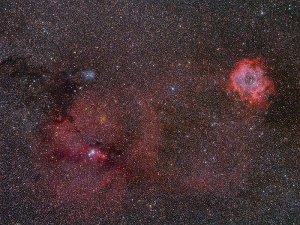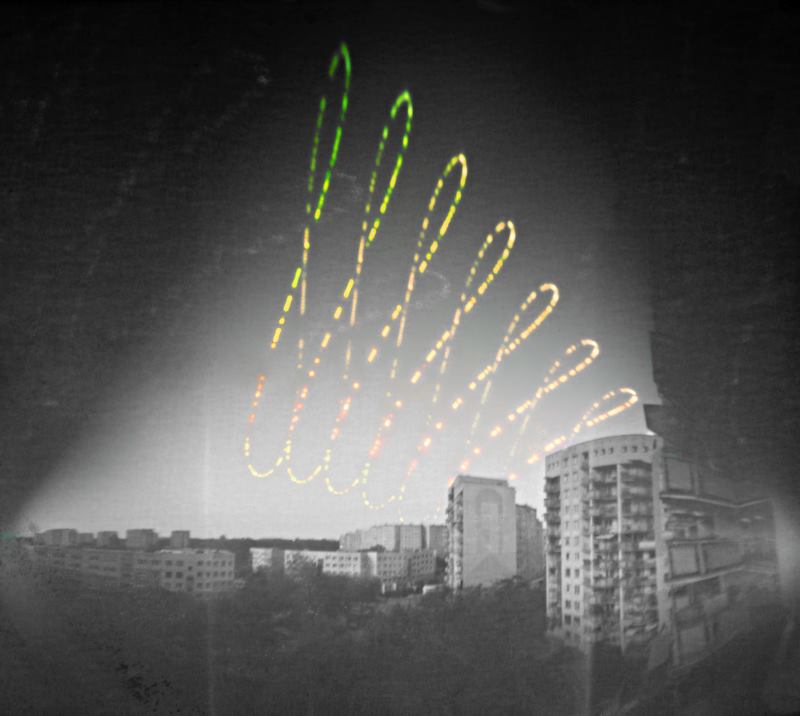Submissions: 2017 March
Submissions: 2017 March
__________________________________________________________________________________________________
Please post your images here.
Please see this thread before posting images; posting images demonstrates your agreement with
the possible uses for your image.
If hotlinking to an image, please ensure it is under 400K.
Hotlinks to images over 400K slow down the thread too much and will be disabled.
Thank you!
_________________________________________________________________________________________________
<- Previous submissions
[c]«« Discuss Anything in Astronomy «» Visit The Asterisk Main Page «» See Introductory Astonomy Lectures »»
«« Introduce Yourself «» Please Read the Rules »»[/c]
Please post your images here.
Please see this thread before posting images; posting images demonstrates your agreement with
the possible uses for your image.
If hotlinking to an image, please ensure it is under 400K.
Hotlinks to images over 400K slow down the thread too much and will be disabled.
Thank you!
_________________________________________________________________________________________________
<- Previous submissions
[c]«« Discuss Anything in Astronomy «» Visit The Asterisk Main Page «» See Introductory Astonomy Lectures »»
«« Introduce Yourself «» Please Read the Rules »»[/c]
Re: Submissions: 2017 March
M78 and Barnard's Loop
Copyrights: Terry Hancock LDN 1622 Lynds' Dark Nebula and Barnard's Loop
Copyrights: Leonardo Julio Uranus, Mars and Venus Conjunction
Copyrights: Srikanth Boga The lightning and Milky way in the mirror of the sky
Copyrights: Stephanie Ye Moon and M23
Copyrights: Oscar Martín Mesonero ISS
Copyrights: Antonio Vilchez NGC7023-VDB141
Copyrights: Idir Saci Seagull Nebula
Copyrights: Ron Brecher Jupiter images (February 19th.)
Copyrights: Damian Peach Heart Nebula
Copyrights: George Nikolidakis Double Sunset
Copyrights: Glen Leesman Milky Way(s)
Copyrights: Mike Lockwood Venus crescent
Copyrights: Emmanuel Beaudoin IC410 & IC405
Copyrights: Jose Jimenez Priego Comet 45P/Honda-Mrkos-Pajdusakova
Copyrights: Francesco Badalotti Orion, Moon, Mars, Venus and ISS from Lannion Bay, Britain, France
Copyrights: Thibault L'allain
Copyrights: Terry Hancock LDN 1622 Lynds' Dark Nebula and Barnard's Loop
Copyrights: Leonardo Julio Uranus, Mars and Venus Conjunction
Copyrights: Srikanth Boga The lightning and Milky way in the mirror of the sky
Copyrights: Stephanie Ye Moon and M23
Copyrights: Oscar Martín Mesonero ISS
Copyrights: Antonio Vilchez NGC7023-VDB141
Copyrights: Idir Saci Seagull Nebula
Copyrights: Ron Brecher Jupiter images (February 19th.)
Copyrights: Damian Peach Heart Nebula
Copyrights: George Nikolidakis Double Sunset
Copyrights: Glen Leesman Milky Way(s)
Copyrights: Mike Lockwood Venus crescent
Copyrights: Emmanuel Beaudoin IC410 & IC405
Copyrights: Jose Jimenez Priego Comet 45P/Honda-Mrkos-Pajdusakova
Copyrights: Francesco Badalotti Orion, Moon, Mars, Venus and ISS from Lannion Bay, Britain, France
Copyrights: Thibault L'allain
Re: Submissions: 2017 March
Orion Nebula
30x300s ISO1600
25x20s ISO1600
30x5s ISO1600
TS-80 Triplet Apo
Canon 750Da
NEQ6 Pro II Mod
Guide with ASI120MC
Deep Sky Stacker
Photoshop with Astronomy Tools and Annie's Astroactions
Lightroom
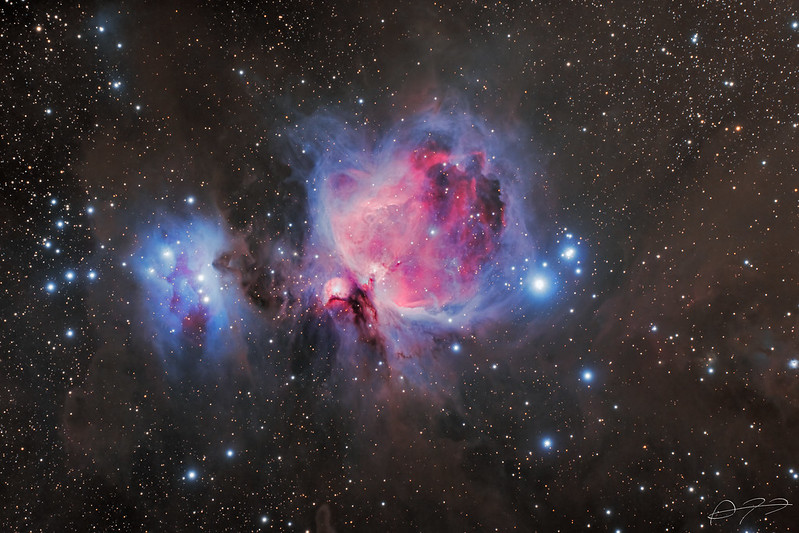 The Great Orion Nebula by Alejandro Pertuz, en Flickr
The Great Orion Nebula by Alejandro Pertuz, en Flickr
30x300s ISO1600
25x20s ISO1600
30x5s ISO1600
TS-80 Triplet Apo
Canon 750Da
NEQ6 Pro II Mod
Guide with ASI120MC
Deep Sky Stacker
Photoshop with Astronomy Tools and Annie's Astroactions
Lightroom
 The Great Orion Nebula by Alejandro Pertuz, en Flickr
The Great Orion Nebula by Alejandro Pertuz, en FlickrRe: Submissions: 2017 March
Solar Prominence explosion on 2/20
Copyrights: Mike Wenz Horsehead, Flame and M78
Copyrights: Terry Hancock Sun Dog
Copyrights: Ferenc Zéman Bright Meteor and Planet Jupiter above Alqueva
Copyrights: Miguel Claro NGC 3198
Copyrights: Ian G Starless M42
Copyrights: Josh Smith Cloud scar
Copyrights: John Maurer Orange planet
Copyrights: Juli Gavaldon A blue fireball
Copyrights: Juli Gavaldon Saturn's Rings Viewed in the Mid-infrared Show Bright Cassini Division
Credits: NAOJ
More about:http://subarutelescope.org/Pressrelease ... index.html Jupiter (February 21st.)
Copyrights: Damian Peach Constellation Leo and the chinese guardian lions
Copyrights: Jeff Dai From Orion To Grand Mesa
Copyrights: Terry Hancock Lyra & Cynus Constellations -A Star Studded Field
Copyrights: John Chumack SH2-240 / Simeis 147
Copyrights: Jens Zippel Orion
Copyrights: Christian Koll NGC 1579 Trifid of the North
Copyrights: Jose Jimenez Priego Rosette Nebula
Copyrights: Rodd Dryfoos
Copyrights: Mike Wenz Horsehead, Flame and M78
Copyrights: Terry Hancock Sun Dog
Copyrights: Ferenc Zéman Bright Meteor and Planet Jupiter above Alqueva
Copyrights: Miguel Claro NGC 3198
Copyrights: Ian G Starless M42
Copyrights: Josh Smith Cloud scar
Copyrights: John Maurer Orange planet
Copyrights: Juli Gavaldon A blue fireball
Copyrights: Juli Gavaldon Saturn's Rings Viewed in the Mid-infrared Show Bright Cassini Division
Credits: NAOJ
More about:http://subarutelescope.org/Pressrelease ... index.html Jupiter (February 21st.)
Copyrights: Damian Peach Constellation Leo and the chinese guardian lions
Copyrights: Jeff Dai From Orion To Grand Mesa
Copyrights: Terry Hancock Lyra & Cynus Constellations -A Star Studded Field
Copyrights: John Chumack SH2-240 / Simeis 147
Copyrights: Jens Zippel Orion
Copyrights: Christian Koll NGC 1579 Trifid of the North
Copyrights: Jose Jimenez Priego Rosette Nebula
Copyrights: Rodd Dryfoos
Re: Submissions: 2017 March
Hydrogen in Monocreos by DSLR
http://www.astromarcin.pl
Copyright: MArcin PAciorek Better res: http://www.astromarcin.pl/images/wide/m ... m_1800.jpg
http://www.astromarcin.pl
Copyright: MArcin PAciorek Better res: http://www.astromarcin.pl/images/wide/m ... m_1800.jpg
-
SpookyAstro
- Science Officer
- Posts: 117
- Joined: Sat Feb 07, 2015 7:38 pm
Re: Submissions: 2017 March
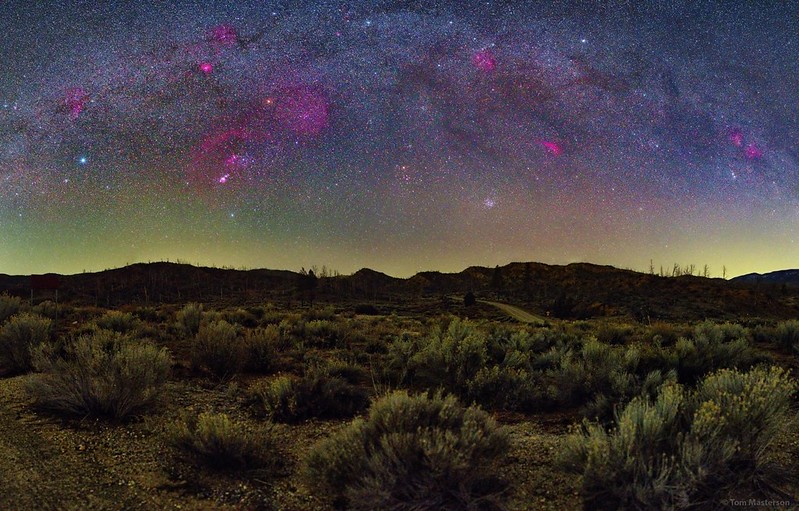 Winter Milky Way Over Los Padres National Forest by Transient Astronomers, on Flickr
Winter Milky Way Over Los Padres National Forest by Transient Astronomers, on FlickrImage credit and copyright Tom Masterson
Re: Submissions: 2017 March
Milkyway Rising - Lake Tarawera
New Zealand is one of the best and safe places to enjoy the Milkyway rising. In the image is the milkyway rising behind Mt. Tarawera looking over Lake Tarawera. This place once used to be home to the famous (even known as 8th wonder of the world) Pink and White Terraces, which was unfortunately destroyed in 1886 Eruption of Mt. Tarawera.
New Zealand is one of the best and safe places to enjoy the Milkyway rising. In the image is the milkyway rising behind Mt. Tarawera looking over Lake Tarawera. This place once used to be home to the famous (even known as 8th wonder of the world) Pink and White Terraces, which was unfortunately destroyed in 1886 Eruption of Mt. Tarawera.
Exploring Night Sky (Amit Ashok Kamble)
website: http://exploringnightsky.com
Facebook: http://facebook.com/exploringnightsky
Instagram: http://instagram.com/exploringnightsky
website: http://exploringnightsky.com
Facebook: http://facebook.com/exploringnightsky
Instagram: http://instagram.com/exploringnightsky
-
michael_kunze
- Asternaut
- Posts: 7
- Joined: Sat Feb 08, 2014 11:24 am
Re: Submissions: 2017 March
Simeis 147 - Sh-2-240
Together have 4 astrophotographers exposed for 120 hours. Equipped with the same optics (200 mm lens) was exposed
in H-alpha, OIII and RGB. The authors come from the West of Germany, the region of Niederrhein (Lower Rhine). We trod the light pollution. The autors are Ralf Kreuels, Michael Kunze, Stephan Küppers, Mark Schocke - http://www.astrofototeam-niederrhein.de
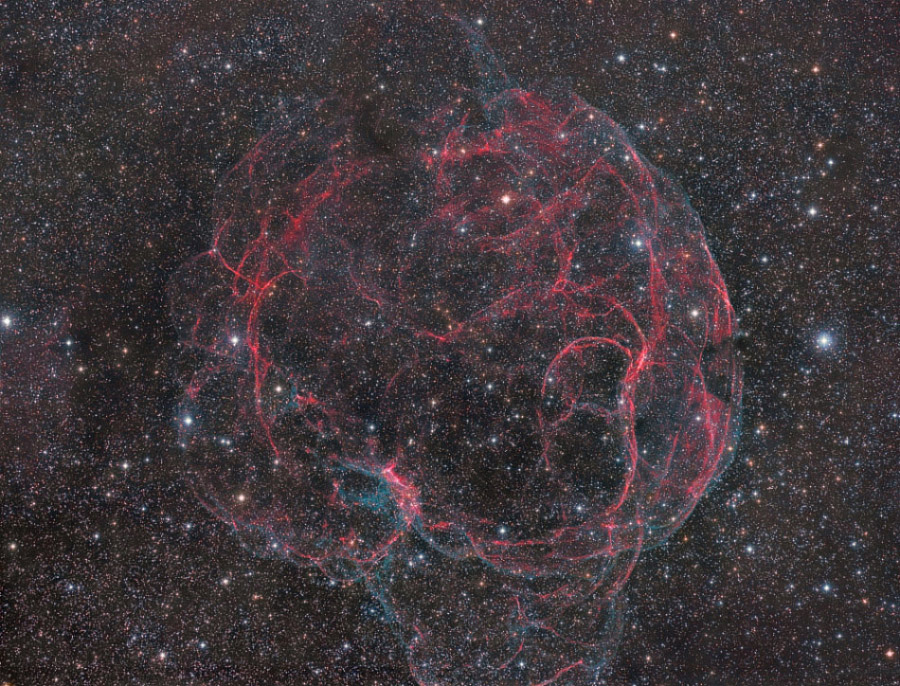
Together have 4 astrophotographers exposed for 120 hours. Equipped with the same optics (200 mm lens) was exposed
in H-alpha, OIII and RGB. The authors come from the West of Germany, the region of Niederrhein (Lower Rhine). We trod the light pollution. The autors are Ralf Kreuels, Michael Kunze, Stephan Küppers, Mark Schocke - http://www.astrofototeam-niederrhein.de

Re: Submissions: 2017 March
[*]IC443 Jellyfish Nebula
http://i1101.photobucket.com/albums/g43 ... educed.jpg
Copyright: Jason Matter
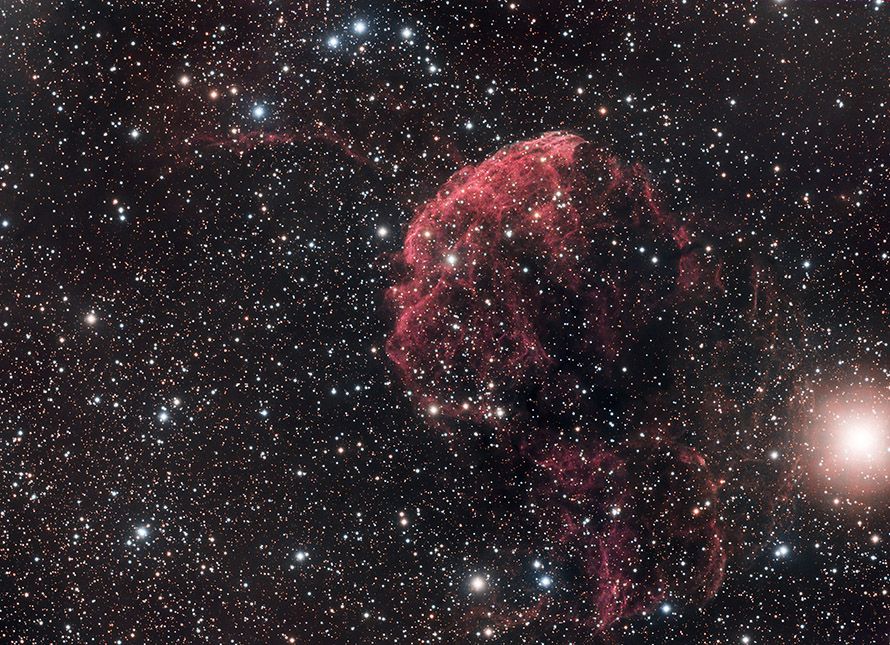
http://i1101.photobucket.com/albums/g43 ... educed.jpg
Copyright: Jason Matter

Re: Submissions: 2017 March
The Witch and Her Big Foot
Somewhere I read that "Rigel" means "big foot" so here is the Witch Head Nebula and Orion's big foot.
http://www.buckeyestargazer.net
Copyright: Joel Short
LRGB = 11hrs 10min
SV80ST Refractor
Moravian G3-16200M Camera
Somewhere I read that "Rigel" means "big foot" so here is the Witch Head Nebula and Orion's big foot.
http://www.buckeyestargazer.net
Copyright: Joel Short
LRGB = 11hrs 10min
SV80ST Refractor
Moravian G3-16200M Camera
Re: Submissions: 2017 March
IC 2631 - A southern Iris nebula
Copyrights: Steve Crouch
Full size: http://members.pcug.org.au/~stevec/ic26 ... 0_RC14.htm The Dawn of a New Era for Supernova 1987A
Image Credit: NASA, ESA, and A. Angelich (NRAO); Hubble Credit: NASA, ESA, and R. Kirshner (Harvard-Smithsonian Center for Astrophysics and Gordon and Betty Moore Foundation); Chandra Credit: NASA/CXC/Penn State/K. Frank et al.; ALMA Credit: ALMA (ESO/NAOJ/NRAO) and R. Indebetouw (NRAO/AUI/NSF)
An article: https://public.nrao.edu/news/pressreleases/2017-sn1987a http://asterisk.apod.com/viewtopic.php?t=36889
Spontaneous “dust traps”: astronomers discover a missing link in planet formation
Image Credit: Jean-Francois Gonzalez
An article: http://www.ras.org.uk/news-and-press/29 ... -formation http://asterisk.apod.com/viewtopic.php?t=36902
Lunar region aroundo mare Nectaris
Copyrights: Francesco Badalotti Jupiter (February 23rd.)
Copyrights: Damian Peach A thousand galaxies in the dark
Copyrights: Manjeet Singh NGC 634
Credits and Copyrights: Data: Hubble Legacy Archive; Processing: Domingo Pestana Evolution of Great Red Spot
Copyrights: Valery Denis Crescent Nebula
Copyrights: Sebastiano Recupero
Full size: http://www.stardust.fit/astronomy/crescent/crescent.jpg 45P/ Honda – Mrkos - Pajdusakova for 24 February 2017 UT
Copyrights: Justin Tilbrook Moon Halo
Copyrights: Mike Taylor & Sonia MacNeil Venus over la "Sainte Chapelle"in the center of Paris
Copyrights: Bertrand Kulik Rainbow around the Sun
Copyrights: Jeff Fidler Copernicus crater in 3D
Copyrights: Matteo Vacca Milky Way from India
Copyrights: Vedant Pratap Singh Jadon Relief near Polybius lunar crater
Copyrights: Francesco Badalotti Comet 45P/Honda-Mrkos-Pajdusakova
Copyrights: Andrea Demarchi Milky Way aurora panorama
Copyrights: Mia Stålnacke
Copyrights: Steve Crouch
Full size: http://members.pcug.org.au/~stevec/ic26 ... 0_RC14.htm The Dawn of a New Era for Supernova 1987A
Image Credit: NASA, ESA, and A. Angelich (NRAO); Hubble Credit: NASA, ESA, and R. Kirshner (Harvard-Smithsonian Center for Astrophysics and Gordon and Betty Moore Foundation); Chandra Credit: NASA/CXC/Penn State/K. Frank et al.; ALMA Credit: ALMA (ESO/NAOJ/NRAO) and R. Indebetouw (NRAO/AUI/NSF)
An article: https://public.nrao.edu/news/pressreleases/2017-sn1987a http://asterisk.apod.com/viewtopic.php?t=36889
Spontaneous “dust traps”: astronomers discover a missing link in planet formation
Image Credit: Jean-Francois Gonzalez
An article: http://www.ras.org.uk/news-and-press/29 ... -formation http://asterisk.apod.com/viewtopic.php?t=36902
Lunar region aroundo mare Nectaris
Copyrights: Francesco Badalotti Jupiter (February 23rd.)
Copyrights: Damian Peach A thousand galaxies in the dark
Copyrights: Manjeet Singh NGC 634
Credits and Copyrights: Data: Hubble Legacy Archive; Processing: Domingo Pestana Evolution of Great Red Spot
Copyrights: Valery Denis Crescent Nebula
Copyrights: Sebastiano Recupero
Full size: http://www.stardust.fit/astronomy/crescent/crescent.jpg 45P/ Honda – Mrkos - Pajdusakova for 24 February 2017 UT
Copyrights: Justin Tilbrook Moon Halo
Copyrights: Mike Taylor & Sonia MacNeil Venus over la "Sainte Chapelle"in the center of Paris
Copyrights: Bertrand Kulik Rainbow around the Sun
Copyrights: Jeff Fidler Copernicus crater in 3D
Copyrights: Matteo Vacca Milky Way from India
Copyrights: Vedant Pratap Singh Jadon Relief near Polybius lunar crater
Copyrights: Francesco Badalotti Comet 45P/Honda-Mrkos-Pajdusakova
Copyrights: Andrea Demarchi Milky Way aurora panorama
Copyrights: Mia Stålnacke
Re: Submissions: 2017 March
Sky over Gladstone Queensland Australia
Copyrights: Graeme Watts Comet 45P
Copyrights: Tommaso MDSCC
Copyrights: Javier Barco Venus surface on 27/02
Copyrights: Marco Guidi The Solar Eclipse in Chile
Copyrights: Stephanie Ye IC 2177
Copyrights: Lloyd L. Smith LBN 782
Copyrights: Lloyd L. Smith Februay Solar Eclipse
Copyrights: Rafael Bueno Leo Triplet from Spain
Copyrights: Álvaro Ibáñez Pérez Partial Solar Eclipse
Copyrights: Fefo Bouvier Solar eclipse in Angola
Credits and Copyrights: Jaime Vilinga, Guillaume Hébrard and Alain Lecavelier des Étangs Earth Shadow over northern city of Iran and Caspian sea
Copyrights: Amir Shahcheraghian Flux
Copyrights: Raul Villaverde Fraile M82
Copyrights: Bernard Miller Annular Eclipse
Copyrights: Sebastián García Rojas Chasing the deep annular eclipse
Copyrights: Petr Horálek Anular Eclipse
Copyrights: Leonardo Julio 41P/Tuttle-Giacobini-Kresak approaches...
Copyrights: James A. DeYoung Partial Solar Eclipse
Copyrights: Samuel Müller
Copyrights: Graeme Watts Comet 45P
Copyrights: Tommaso MDSCC
Copyrights: Javier Barco Venus surface on 27/02
Copyrights: Marco Guidi The Solar Eclipse in Chile
Copyrights: Stephanie Ye IC 2177
Copyrights: Lloyd L. Smith LBN 782
Copyrights: Lloyd L. Smith Februay Solar Eclipse
Copyrights: Rafael Bueno Leo Triplet from Spain
Copyrights: Álvaro Ibáñez Pérez Partial Solar Eclipse
Copyrights: Fefo Bouvier Solar eclipse in Angola
Credits and Copyrights: Jaime Vilinga, Guillaume Hébrard and Alain Lecavelier des Étangs Earth Shadow over northern city of Iran and Caspian sea
Copyrights: Amir Shahcheraghian Flux
Copyrights: Raul Villaverde Fraile M82
Copyrights: Bernard Miller Annular Eclipse
Copyrights: Sebastián García Rojas Chasing the deep annular eclipse
Copyrights: Petr Horálek Anular Eclipse
Copyrights: Leonardo Julio 41P/Tuttle-Giacobini-Kresak approaches...
Copyrights: James A. DeYoung Partial Solar Eclipse
Copyrights: Samuel Müller
-
Maciej Zapiór
Re: Submissions: 2017 March
Solargraphy Analemma
Copyrights: Łukasz Fajfrowski & Maciej Zapiór
More info: http://www.analemma.pl
Copyrights: Łukasz Fajfrowski & Maciej Zapiór
More info: http://www.analemma.pl
-
astrosirius
- Science Officer
- Posts: 117
- Joined: Fri Nov 23, 2012 11:17 am
- Location: Barcelona Spain
- Contact:
Re: Submissions: 2017 March
M94 Espiral Galaxy & the Outer Ring
Messier 94 (also known as NGC 4736) is a spiral galaxy in the constellation Canes Venatici. It was discovered by Pierre Méchain in 1781, and catalogued by Charles Messier two days later. Although some references describe M94 as a barred spiral galaxy, the "bar" structure appears to be more oval-shaped. The galaxy has two ring structures
M94 contains both an inner ring with a diameter of 70 arcseconds and an outer ring with a diameter of 600 arcseconds. These rings appear to form at resonance locations within the disk of the galaxy. The inner ring is the site of strong star formation activity and is sometimes referred to as a starburst ring. This star formation is fueled by gas that is dynamically driven into the ring by the inner oval-shaped bar-like structure.
A 2009 study conducted by an international team of astrophysicists revealed that the outer ring of M94 is not a closed stellar ring, as historically attributed in the literature, but a complex structure of spiral arms when viewed in mid-IR and UV. The study found that the outer disk of this galaxy is active. It contains approximately 23% of the galaxy's total stellar mass and contributes about 10% of the galaxy's new stars. In fact, the star formation rate of the outer disk is approximately two times greater than the inner disk because it is more efficient per unit of stellar mass.
There are several possible external events that could have led to the origin of M94's outer disk including the accretion of a satellite galaxy or the gravitational interaction with a nearby star system. However, further research found problems with each of these scenarios. Therefore, the report concludes that the inner disk of M94 is an oval distortion which led to the creation of this galaxy's peripheral disk.
The estimated average distance to M94 is estimated of 16.0 ± 1.3 Mly (4.9 ± 0.4 Mpc). In total the galaxy spans 11.2 x 9.2 arc minutes of apparent sky, which corresponds to a spatial diameter of 50,000 light-years. It's estimated to contain about 40 billion stars. The galaxy is best seen from the Northern Hemisphere during the months of March, April or May.
M94 is one of the brightest galaxies within the M94 Group, a group of galaxies that contains between 16 and 24 galaxies. This group is one of many that lies within the Virgo Supercluster (i.e. the Local Supercluster). Although a large number of galaxies may be associated with M94, only a few galaxies near M94 appear to form a gravitationally bound system. Most of the other nearby galaxies appears to be moving with the expansion of the universe.
M94 is a nice spiral galaxy located in the constellation of Canes Venatici. It's also known as the Cats Eye Galaxy or the Crocs Eye Galaxy due to its stunning eye-like resemblance. With an apparent magnitude of +8.5, it's a difficult binocular object requiring dark skies and good transparency; at best appearing as only a small faint hazy patch of light.
Copyright by: Lluís Romvero Ventura
About this Image:
Location: Àger-Lleida-Spain
Dates: 24-25-26 Dec-2016 // 07-08-17-18-19-20-21-22 Jan 2017
Average SQM: 21.4-21.6
Telescope: GSO RC14” Truss f8
Camera: Moravian G3-11000 classe 2
Focuser: Feather Touch 3” Kit boss II
Flattener: TSFlattener 2.5”
Filters: Astrodon LRGB Gen2 I-Series True-Balance
Exposures: L:39x900 sec bin1
L:2x1800 sec bin1
R:G:B: 19:22:28 x 600 sec bin1
R:G:B: 24:19:18 x 900 sec bin1
R:G:B:4:4:4: x 1800 sec bin1
Total Exposure: 36.6 hours
Processing: Pixinsight & Photoshop CC 2017
Best Regards.
Lluís Romero.
Web site: http://www.astrophotographysirius.com/
Messier 94 (also known as NGC 4736) is a spiral galaxy in the constellation Canes Venatici. It was discovered by Pierre Méchain in 1781, and catalogued by Charles Messier two days later. Although some references describe M94 as a barred spiral galaxy, the "bar" structure appears to be more oval-shaped. The galaxy has two ring structures
M94 contains both an inner ring with a diameter of 70 arcseconds and an outer ring with a diameter of 600 arcseconds. These rings appear to form at resonance locations within the disk of the galaxy. The inner ring is the site of strong star formation activity and is sometimes referred to as a starburst ring. This star formation is fueled by gas that is dynamically driven into the ring by the inner oval-shaped bar-like structure.
A 2009 study conducted by an international team of astrophysicists revealed that the outer ring of M94 is not a closed stellar ring, as historically attributed in the literature, but a complex structure of spiral arms when viewed in mid-IR and UV. The study found that the outer disk of this galaxy is active. It contains approximately 23% of the galaxy's total stellar mass and contributes about 10% of the galaxy's new stars. In fact, the star formation rate of the outer disk is approximately two times greater than the inner disk because it is more efficient per unit of stellar mass.
There are several possible external events that could have led to the origin of M94's outer disk including the accretion of a satellite galaxy or the gravitational interaction with a nearby star system. However, further research found problems with each of these scenarios. Therefore, the report concludes that the inner disk of M94 is an oval distortion which led to the creation of this galaxy's peripheral disk.
The estimated average distance to M94 is estimated of 16.0 ± 1.3 Mly (4.9 ± 0.4 Mpc). In total the galaxy spans 11.2 x 9.2 arc minutes of apparent sky, which corresponds to a spatial diameter of 50,000 light-years. It's estimated to contain about 40 billion stars. The galaxy is best seen from the Northern Hemisphere during the months of March, April or May.
M94 is one of the brightest galaxies within the M94 Group, a group of galaxies that contains between 16 and 24 galaxies. This group is one of many that lies within the Virgo Supercluster (i.e. the Local Supercluster). Although a large number of galaxies may be associated with M94, only a few galaxies near M94 appear to form a gravitationally bound system. Most of the other nearby galaxies appears to be moving with the expansion of the universe.
M94 is a nice spiral galaxy located in the constellation of Canes Venatici. It's also known as the Cats Eye Galaxy or the Crocs Eye Galaxy due to its stunning eye-like resemblance. With an apparent magnitude of +8.5, it's a difficult binocular object requiring dark skies and good transparency; at best appearing as only a small faint hazy patch of light.
Copyright by: Lluís Romvero Ventura
About this Image:
Location: Àger-Lleida-Spain
Dates: 24-25-26 Dec-2016 // 07-08-17-18-19-20-21-22 Jan 2017
Average SQM: 21.4-21.6
Telescope: GSO RC14” Truss f8
Camera: Moravian G3-11000 classe 2
Focuser: Feather Touch 3” Kit boss II
Flattener: TSFlattener 2.5”
Filters: Astrodon LRGB Gen2 I-Series True-Balance
Exposures: L:39x900 sec bin1
L:2x1800 sec bin1
R:G:B: 19:22:28 x 600 sec bin1
R:G:B: 24:19:18 x 900 sec bin1
R:G:B:4:4:4: x 1800 sec bin1
Total Exposure: 36.6 hours
Processing: Pixinsight & Photoshop CC 2017
Best Regards.
Lluís Romero.
Web site: http://www.astrophotographysirius.com/
Lluís Romero Ventura
http://astrotolva.com/
http://astrotolva.com/
Re: Submissions: 2017 March
NGC 1514 and faint IFN
http://www.manuelj.com
Copyright: Manuel Jimenez
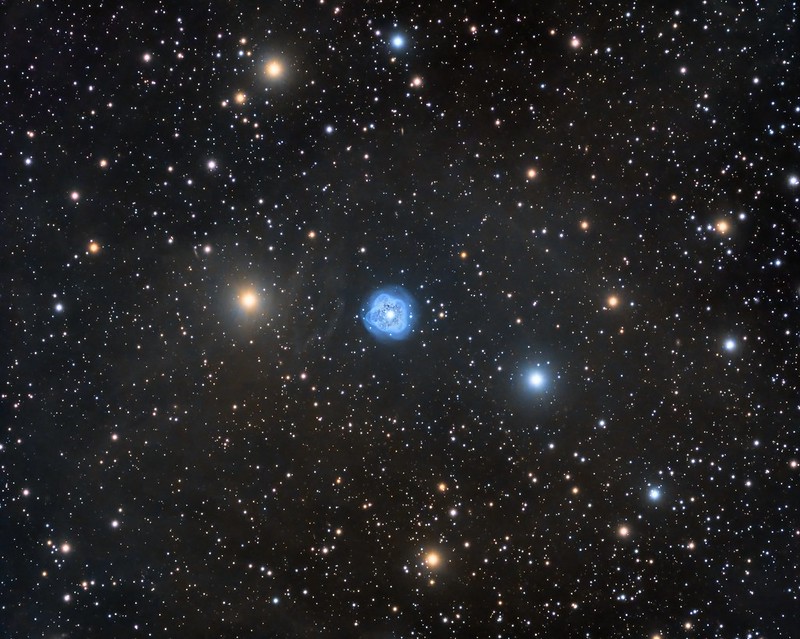 NGC 1514 by ManuelJ, on Flickr
NGC 1514 by ManuelJ, on Flickr
http://www.manuelj.com
Copyright: Manuel Jimenez
 NGC 1514 by ManuelJ, on Flickr
NGC 1514 by ManuelJ, on Flickr-
Simon Waters
Re: Submissions: 2017 March
A surreal result of pursuing 'advanced' plate solving using astronomical databases of fainter magnitude stars via Pixinsight. This single 3 min image of the Running Chicken nebula, IC2944, using low gain (75) with the ASI1600 astro camera and Takahashi E-130D astrograph. PPMXL catalog of stars used. There are over 32,000 labels in this picture, download at high resolution and zoom in to see the identifiers.
See the Flickr link https://flic.kr/p/SxCyJL for a high resolution version
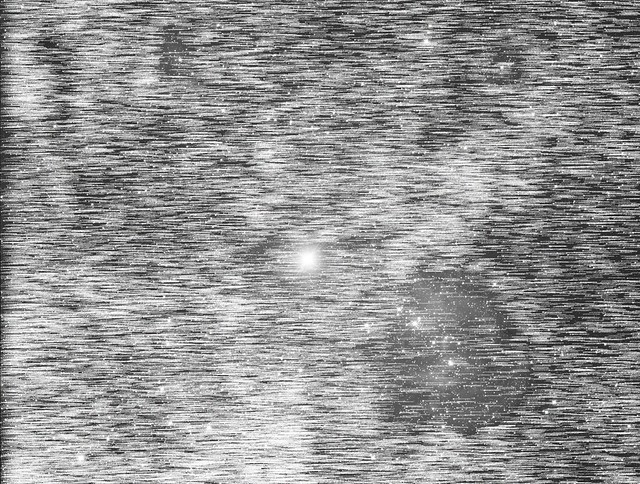 A picture is worth over a thousand words? by Simon W, on Flickr
A picture is worth over a thousand words? by Simon W, on Flickr
See the Flickr link https://flic.kr/p/SxCyJL for a high resolution version
 A picture is worth over a thousand words? by Simon W, on Flickr
A picture is worth over a thousand words? by Simon W, on Flickr-
starsurfer
- Stellar Cartographer
- Posts: 5409
- Joined: Thu Mar 15, 2012 7:25 pm
Re: Submissions: 2017 March
I have never seen an image that shows the OIII associated with this supernova remnant so well!michael_kunze wrote:Simeis 147 - Sh-2-240
Together have 4 astrophotographers exposed for 120 hours. Equipped with the same optics (200 mm lens) was exposed
in H-alpha, OIII and RGB. The authors come from the West of Germany, the region of Niederrhein (Lower Rhine). We trod the light pollution. The autors are Ralf Kreuels, Michael Kunze, Stephan Küppers, Mark Schocke - http://www.astrofototeam-niederrhein.de
-
starsurfer
- Stellar Cartographer
- Posts: 5409
- Joined: Thu Mar 15, 2012 7:25 pm
Re: Submissions: 2017 March
We truly live in a golden age of astrophotography!
Re: Submissions: 2017 March
Tiny Planet at the Pic du Midi Observatory
Copyright: David Néel The top one telescope is the 1m installed by NASA to map moon during the 60 (Apollo Mission forecast)
The one at 1oclock is the solar coronograph Climso telescope.
Orange light is light pollution and bottom white light is zodiacal light
Ballet of groomers at La Mongie ski resort
Copyright: David Néel White trails are groomers lights. La Mongie ski resort is on the left part of the picture (light purple)
The big light in the middle is the famous Col du Tourmalet (Tour de France cycling bike run).
Took from the Pic du Midi Observatory
You can see the full Timelapse at https://www.youtube.com/watch?v=mL8iq1hzX9k
Copyright: David Néel The top one telescope is the 1m installed by NASA to map moon during the 60 (Apollo Mission forecast)
The one at 1oclock is the solar coronograph Climso telescope.
Orange light is light pollution and bottom white light is zodiacal light
Ballet of groomers at La Mongie ski resort
Copyright: David Néel White trails are groomers lights. La Mongie ski resort is on the left part of the picture (light purple)
The big light in the middle is the famous Col du Tourmalet (Tour de France cycling bike run).
Took from the Pic du Midi Observatory
You can see the full Timelapse at https://www.youtube.com/watch?v=mL8iq1hzX9k
-
Steve Pastor
- Ensign
- Posts: 26
- Joined: Mon Jun 20, 2016 5:20 pm
Re: Submissions: 2017 March
A Young Open Cluster in a Nebulous Complex
The open cluster NGC 6910 is found in the nebulous emission complex IC 1318, which is located in the constellation Cygnus. As NGC 6910 is near the galactic plane, there is a significant amount of interstellar dust in the area. Indeed, the blue spectroscopic star HIP 100548 (aka SAO 49563) is rendered yellowish white due to the light scattering by the interstellar dust. Estimated distance of the star cluster and nebula is 2,000 to 5,000 light years. Image was taken with a 12.5 inch at f/9 RCOS astrograph with a SBIG STF8300c CCD camera on a Paramount ME in Mayhill, NM on the nights of 4, 5, 21, 25, 29, ant 30 Oct 2016. Total of 14 hr 20 min exposure (43 x 1200 sec lights at -15 degrees C; 18 darks; 128 bias; 128 flats); image acquisition MaxIm DL 6; calibration, registration, integration, and processing in PixInsight 1.8.4.1195 Ripley (x64)
The open cluster NGC 6910 is found in the nebulous emission complex IC 1318, which is located in the constellation Cygnus. As NGC 6910 is near the galactic plane, there is a significant amount of interstellar dust in the area. Indeed, the blue spectroscopic star HIP 100548 (aka SAO 49563) is rendered yellowish white due to the light scattering by the interstellar dust. Estimated distance of the star cluster and nebula is 2,000 to 5,000 light years. Image was taken with a 12.5 inch at f/9 RCOS astrograph with a SBIG STF8300c CCD camera on a Paramount ME in Mayhill, NM on the nights of 4, 5, 21, 25, 29, ant 30 Oct 2016. Total of 14 hr 20 min exposure (43 x 1200 sec lights at -15 degrees C; 18 darks; 128 bias; 128 flats); image acquisition MaxIm DL 6; calibration, registration, integration, and processing in PixInsight 1.8.4.1195 Ripley (x64)
Re: Submissions: 2017 March
Re: Submissions: 2017 March
-
KuriousGeorge
- Science Officer
- Posts: 218
- Joined: Wed Dec 30, 2015 7:07 am
- Location: San Diego, CA
- Contact:
Re: Submissions: 2017 March
The famous Needle Galaxy, NGC4565. Copyright KG Observatory...
NGC 4565 is a giant spiral galaxy more luminous than the Andromeda Galaxy. Much speculation exists in the literature as to the nature of the central bulge. In the absence of clear-cut dynamical data on the motions of stars in the bulge, the photometric data alone cannot adjudge among various options put forth. However, its exponential shape suggested that it is a barred spiral galaxy.
Imaging telescope or lens: Celestron 8" EdgeHD
Imaging camera: QSI 660 WSG
Mount: Losmandy G-11
Guiding camera: Starlight Xpress Lodestar X2
Focal reducer: Celestron 0.7X
Software: PixInsight 1.8, PHD Guiding 2, Neat Image V7, Sequence Generator Pro, Maxim DL6, Adobe Photoshop CC 2014
Filters: Astrodon 1.25" R, Astrodon 1.25" B, Astrodon 1.25" G, Astrodon 1.25" L
Accessories: Innovations Foresight ONAG SC, Optec FocusLock, Starizona MicroTouch Autofocuser
Resolution: 1692x1742
Dates: Feb. 25, 2017, Feb. 28, 2017, March 1, 2017, March 3, 2017
Frames:
Astrodon 1.25" B: 90x120" -20C bin 1x1
Astrodon 1.25" G: 60x120" -20C bin 1x1
Astrodon 1.25" L: 122x120" -20C bin 1x1
Astrodon 1.25" R: 60x120" -20C bin 1x1
Integration: 11.1 hours
Darks: ~20
Flats: ~80
Flat darks: ~80
Bias: ~20
Avg. Moon age: 9.13 days
Avg. Moon phase: 8.86%
Mean SQM: 19.75
Locations: Home, Rancho Santa Fe, California, United States
NGC 4565 is a giant spiral galaxy more luminous than the Andromeda Galaxy. Much speculation exists in the literature as to the nature of the central bulge. In the absence of clear-cut dynamical data on the motions of stars in the bulge, the photometric data alone cannot adjudge among various options put forth. However, its exponential shape suggested that it is a barred spiral galaxy.
Imaging telescope or lens: Celestron 8" EdgeHD
Imaging camera: QSI 660 WSG
Mount: Losmandy G-11
Guiding camera: Starlight Xpress Lodestar X2
Focal reducer: Celestron 0.7X
Software: PixInsight 1.8, PHD Guiding 2, Neat Image V7, Sequence Generator Pro, Maxim DL6, Adobe Photoshop CC 2014
Filters: Astrodon 1.25" R, Astrodon 1.25" B, Astrodon 1.25" G, Astrodon 1.25" L
Accessories: Innovations Foresight ONAG SC, Optec FocusLock, Starizona MicroTouch Autofocuser
Resolution: 1692x1742
Dates: Feb. 25, 2017, Feb. 28, 2017, March 1, 2017, March 3, 2017
Frames:
Astrodon 1.25" B: 90x120" -20C bin 1x1
Astrodon 1.25" G: 60x120" -20C bin 1x1
Astrodon 1.25" L: 122x120" -20C bin 1x1
Astrodon 1.25" R: 60x120" -20C bin 1x1
Integration: 11.1 hours
Darks: ~20
Flats: ~80
Flat darks: ~80
Bias: ~20
Avg. Moon age: 9.13 days
Avg. Moon phase: 8.86%
Mean SQM: 19.75
Locations: Home, Rancho Santa Fe, California, United States
Re: Submissions: 2017 March
Stars Above Mount Etna Unesco World Heritage Site
http://www.dariogiannobile.com
Copyright: Dario Giannobile Stars Above Mount Etna, Unesco World Heritage Site, during March 2017 eruption under the Moon light. Red glares can be seen over the top craters and lava descenting the mountain on the right side. The smoke from the top is enlighted by the lights of Catania, Sicily, Italy.
http://www.dariogiannobile.com
Copyright: Dario Giannobile Stars Above Mount Etna, Unesco World Heritage Site, during March 2017 eruption under the Moon light. Red glares can be seen over the top craters and lava descenting the mountain on the right side. The smoke from the top is enlighted by the lights of Catania, Sicily, Italy.
